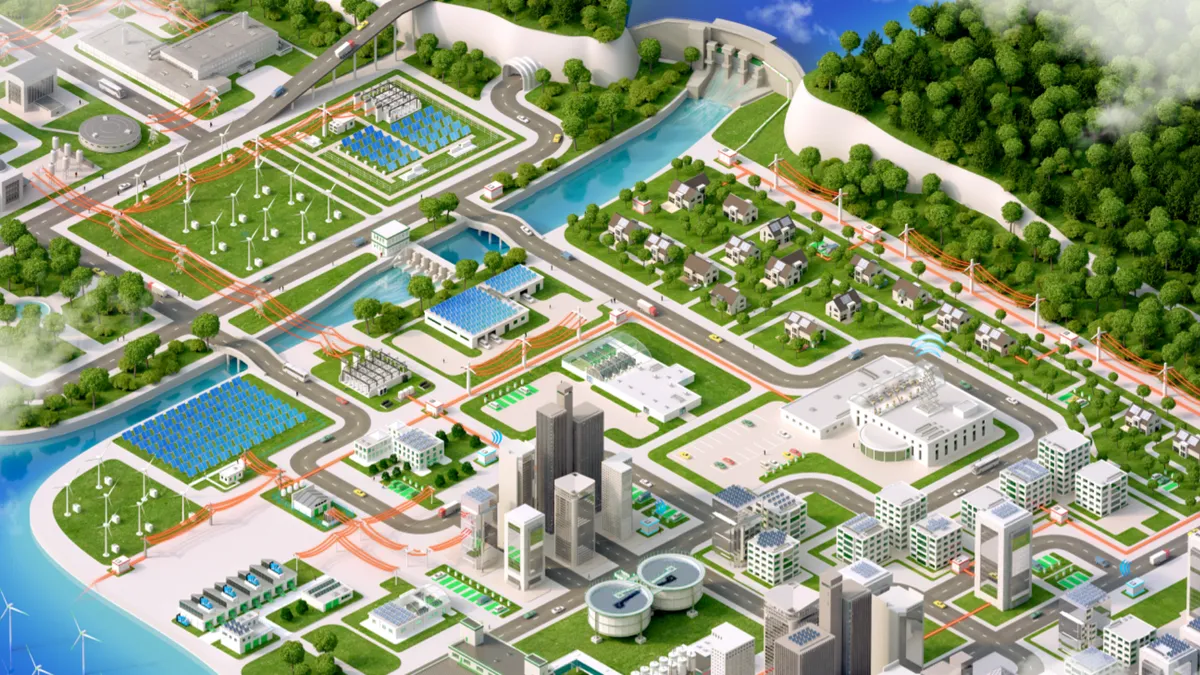The race to net-zero has come under the spotlight following ambitious commitments made by global leaders and corporations at COP26 to accelerate decarbonization. For heavy emitting sectors, such as the electricity industry – the second-largest source of greenhouse gas emissions in the U.S., pressure is intensifying to find solutions to slash emissions and lower its carbon footprint.
Some countries and blocs, such as the European Union, have set carbon-neutral goals for 2050 and beyond, but a world powered by 100% renewable energy is not on the immediate horizon. Non-renewables will still be required, and a cost-effective solution for sectors to cut emissions is to improve efficiency. The greening of electricity systems within the power sector offers enormous decarbonization potential. A recent study found that 500 million metric tons of carbon dioxide could be eliminated by improving grid efficiencies globally.
One of the most significant barriers to decarbonizing power grids is the continued use of sulfur hexafluoride (SF6) in high-voltage (HV) and medium-voltage (MV) switchgear. While SF6 is well suited for electrical current breaking and insulation, its use comes at a potentially heavy cost to the environment. SF6 is 23,500 times more potent than CO2.
3 key challenges power grids must solve to lower carbon footprint
1. Integrating renewable energy
First and foremost, more renewable energy needs to be integrated into electricity systems to achieve greener grids. This will require integrating distributed energy resources (DER) into existing power networks, posing technical challenges.
2. Efficiency in electricity systems will need to be improved
Since electrical distribution efficiency is rarely planned or managed, significant amounts of electricity is wasted. For example, in the EU, annual electricity transmission and distribution losses average 5%, representing €5 billion in energy wasted annually in MV distribution.
3. MV equipment needs to transition away from SF6
More than 10 million MV switchgear units in the EU alone use SF6, which collectively are estimated to contain 8,600 tonnes of SF6 gas. If released into the atmosphere, this would have a CO2 equivalent of 196 million tonnes, more than twice as much as passenger cars emit in Europe each year.
Digital and SF6 alternatives: A powerful duo for decarbonization and efficiency
Working in concert, digital and SF6 alternatives offer a proven and cost-effective solution to the climate conundrum surrounding decarbonizing power grids. Considering that total power demand will increase by more than 60% from now to 2050, this powerful duo must be scaled at a pace for the power sector to meet its climate targets. Here's how digital and SF6 alternatives can solve power grids' climate challenges.
Connected digital equipment enables more renewable integration
The push to net-zero requires greater DER penetration to integrate more renewable energy sources. To do so, electricity systems need to be far more sophisticated in their planning, operations, and management. Fortunately, digital technologies can enable this with smart sensors, actuators, and central intelligence.
Both public power grids and private networks also need to accommodate new consumer profiles as they transition from passively consuming electricity to consuming and producing their own, and digitization can enable this. With digitization, more active and automated grids will have the ability to welcome these new consumer profiles, providing added flexibility to grids, a crucial component in the jigsaw puzzle for reaching a net-zero future.
Connected digital equipment enables better efficiency
To achieve efficiency gains, electricity grids can utilize connected digital equipment to unlock the power of data. For instance, advanced distribution management systems (ADMS) can estimate losses using real-time network topology, network measurements, load profiles at substations, and customer consumption information.
ADMS can also use this data and weather forecasts to develop optimum configurations on a seasonal, yearly, or even hourly basis, minimizing load imbalance and improving voltage quality. By harnessing the power of data, connected digital equipment provides improved power reliability and availability, creating a more efficient, greener electricity system.
Sustainable, game-changing substitutes are now available for SF6
While the technology enabling a smart grid plays a significant role in decarbonizing power systems, replacing SF6 in electrical equipment could play an equal part in driving the power sector's lower carbon ambitions.
New innovations, such as Schneider Electric's award-winning SF6-free switchgear technology, are game-changers. The MV switchgear uses the company's new Shunt Vacuum Interruption (SVI)TM technology combined with pure air insulation. Thus, it ensures the trusted operation mode of traditional SF6-based equipment maintaining the ability to insulate and break the electrical current while slashing the carbon footprint and ensuring cost-effectiveness by keeping the size compact with fuse protection and switch functions.
Similarly, Schneider Electric's RM AirSeTTM, with its smart and digital design, offers better connectivity and enhanced flexibility with mechanical performance allowing up to 10,000 operations giving grids the ability to handle more DER in the distribution network.
A powerful, future-proofed solution
As Schneider Electric's Melton Chang (SVP Medium Voltage Line of Business) describes, "When deployed together, digital technologies and SF6 alternatives can simplify complex modern electricity networks by allowing for more renewables to be integrated, improving grids' efficiency, cutting SF6 use, and correspondingly drastically lowering their carbon footprint. As markets seek to transition away from SF6 with emerging legislation and demand for additional and more efficient renewable energy grows, the duo of digital and SF6 alternatives beyond F-gases offer a powerful and cost-effective solution, and that's good for the environment and the bottom line."










